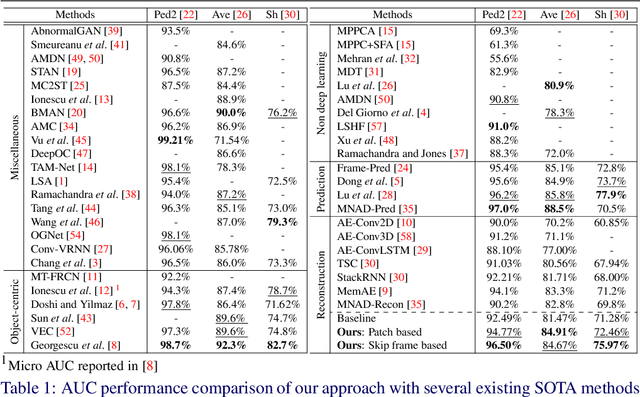Learning Not to Reconstruct Anomalies
Paper and Code
Oct 24, 2021



Video anomaly detection is often seen as one-class classification (OCC) problem due to the limited availability of anomaly examples. Typically, to tackle this problem, an autoencoder (AE) is trained to reconstruct the input with training set consisting only of normal data. At test time, the AE is then expected to well reconstruct the normal data while poorly reconstructing the anomalous data. However, several studies have shown that, even with only normal data training, AEs can often start reconstructing anomalies as well which depletes the anomaly detection performance. To mitigate this problem, we propose a novel methodology to train AEs with the objective of reconstructing only normal data, regardless of the input (i.e., normal or abnormal). Since no real anomalies are available in the OCC settings, the training is assisted by pseudo anomalies that are generated by manipulating normal data to simulate the out-of-normal-data distribution. We additionally propose two ways to generate pseudo anomalies: patch and skip frame based. Extensive experiments on three challenging video anomaly datasets demonstrate the effectiveness of our method in improving conventional AEs, achieving state-of-the-art performance.
 Add to Chrome
Add to Chrome Add to Firefox
Add to Firefox Add to Edge
Add to Edge